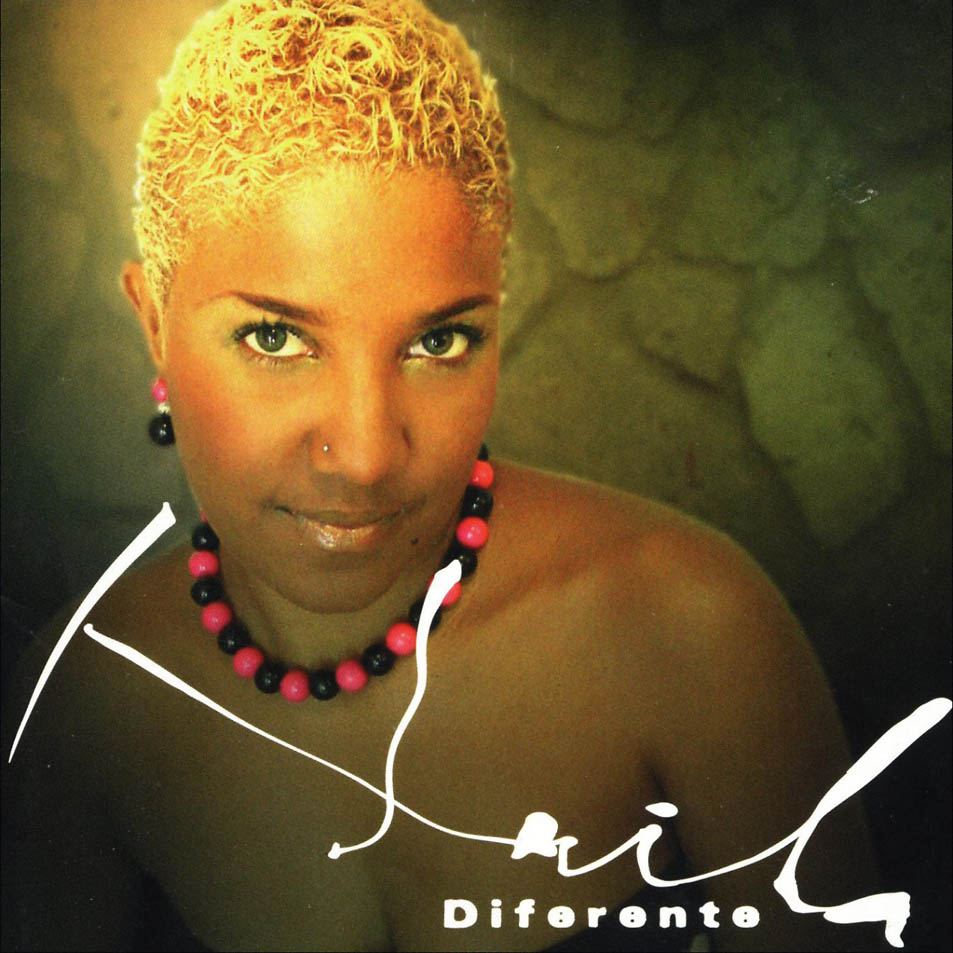13.11.5 Haila Maria Mompié González

Haila Maria Mompié González, a prominent Cuban singer, was born on January 28, 1974, in the eastern province of Las Tunas. From a young age, she felt a strong inclination toward music, especially singing, although she initially gravitated toward dance, to which she devoted several years of study.
In 1991, during a dance rehearsal, Haila raised her voice with incredible intonation and her impressive timbre caught the attention of the well-known Cuban singer Yaquelín Castellanos, who immediately proposed that she join her group, “Septeto Tradición.”
The following year, Haila made her solo debut at the cabaret “Las Avenidas” and later joined the group “Habana Son” under the direction of saxophonist “El Chino Lam.” That same year, she embarked on her first international tour, touring various venues in Mexico, where she was invited to participate in the show “Guajira Habanera.”
In 1994, she joined the musical group Bamboleo as a vocalist, where her magnificent vocal qualities, high level of improvisation, and excellent stage presence made her stand out. Bamboleo began to become one of the most popular groups in the country, leading them to undertake several tours that soon expanded to countries such as Mexico, Peru, the United States, France, Belgium, Italy, the Netherlands, and England, among others.
With Bamboleo, Haila María Mompié recorded two albums in 1997: “Te gusto o te caigo bien” (I like you or I like you) and “Yo no me parezco a nadie” (I don’t look like anyone). In 1998, she joined the Azúcar Negra project of musician and composer Leonel Limonta. With this orchestra, she recorded the album “Andar Andando” (Andar Andando), which achieved significant popularity and went on to several successful tours in the Americas and Europe.
Already showing a visible artistic maturity, and with her talent, she recorded a solo album directed and produced by the renowned Cuban singer Isaac Delgado under the Bis Music label. On the album “Haila,” she showcases her deep passion for music, which is felt in the strength and soul of her voice. It was with these accumulated experiences that she decided in 2001 to embark on a solo career. She began appearing as a performer on several albums by prominent Cuban musicians, displaying her versatility and Cuban identity. One of these albums, the CD “La Rumba Soy Yo,” won a Latin Grammy in 2001.
Haila María Mompié performed with great success on various stages in Japan as a soloist between 2000 and 2002, when she was chosen as a guest to participate in the Tropicana cabaret show and was also selected to join the cast of the “Son Cuba Festival,” which offered concerts in several European countries. She was also part of the Cuban Grammy project alongside important figures such as Chucho Valdés, Juan Formell, Eliades Ochoa, Los Papines, Ernán López-Nussa, and Sampling. That year, she also had the opportunity to perform alongside Isaac Delgado on stages in the United States.
In April 2003, she presented her orchestra, made up of talented musicians, in a show held at the Copa Room cabaret at the Riviera Hotel (Paseo y Malecón, Vedado, Plaza de la Revolución, Havana). Also that year, “La Diva del Son,” as she is also known in Cuba, embarked on a major international tour of Europe, which also included several performances in various cities in Japan, alongside David Calzado and his Charanga Habanera.
In 2004, Haila María Mompié traveled to Canada to promote her album “Haila Live.” The album, released on the Bis Music label, was produced and musically directed by Juan Manuel Cerito and features the participation of prominent figures such as Chucho Valdés, Mayito Rivera, Issac Delgado, and David Calzado. The CD includes thirteen tracks from a concert the artist performed at the National Theater of Cuba (Paseo and 39th Street, Vedado, Plaza de la Revolución, Havana) in 2003.
In 2004, Haila also launched the Las Divas project with her inseparable friend Vania, performing in various important theaters in Havana.
The following year, she participated in the recording of the album “Cuba Canta a Serrat,” a tribute to Catalan singer and composer Joan Manuel Serrat. The album began with twelve tracks and later grew into a double album with more than twenty. Other artists such as Pablo Milanés, David Álvarez, and Silvio Rodríguez participated. During this time, the diva performed several live shows with Charanga Habanera, recorded several television programs, and made several international appearances.
However, amidst all the work and energy, promoting her latest album took priority for Haila during this period. The CD “Diferente,” produced by David Calzado, was presented at the Meliá Cohíba Hotel and was a huge success. Her versatility, the temperament of her voice, and the young performer’s professional maturity were evident in every track on the album, which quickly won over audiences of different generations and for which she was nominated for the 2005 Cubadisco Award in the Pop-Fusion category. The song “Quién Fue” features a video clip by director Alfredo Ureta and was produced with excellent craftsmanship by the record label Bis Music.
Without a doubt, the album “Diferente” consolidated her already established popularity. Haila began performing numerous shows accompanied by her band “Habana Casino,” and was followed and increasingly admired by the public at each one.
Considered one of the most important contemporary Cuban soneras, Haila María Mompié has shared the stage throughout her career with prominent national and international figures, including, in addition to those already mentioned, Oscar de León, Celia Cruz, Cheo Feliciano, Rey Ruiz, Gilberto Santa Rosa, José Alberto El Canario, Mario Rivera, Juan Manuel Ceruto, and Los Muñequitos de Matanzas. She has participated in several recordings with other prestigious groups.
Haila has achieved a prestigious place in Cuban culture thanks to her dedication, professionalism, and the quality of her voice. For all of this and for her Cuban identity, she is and will remain the “Diva of Son” for all of Cuba.








